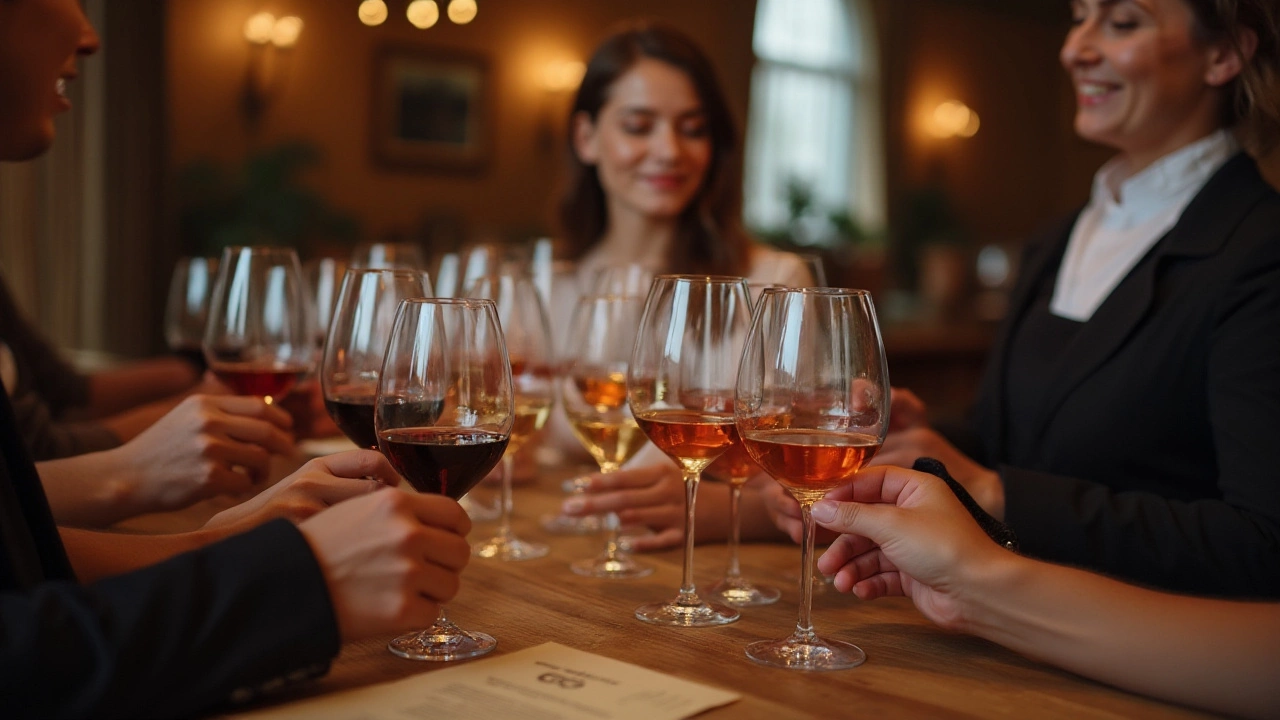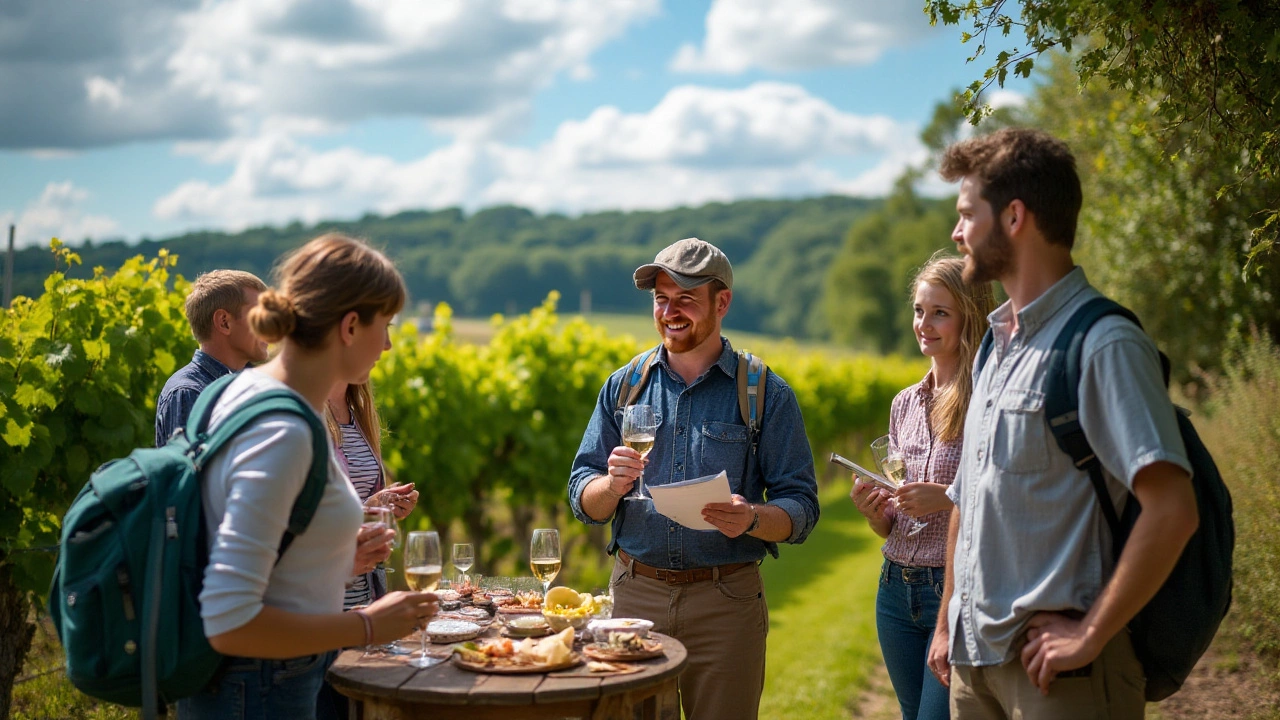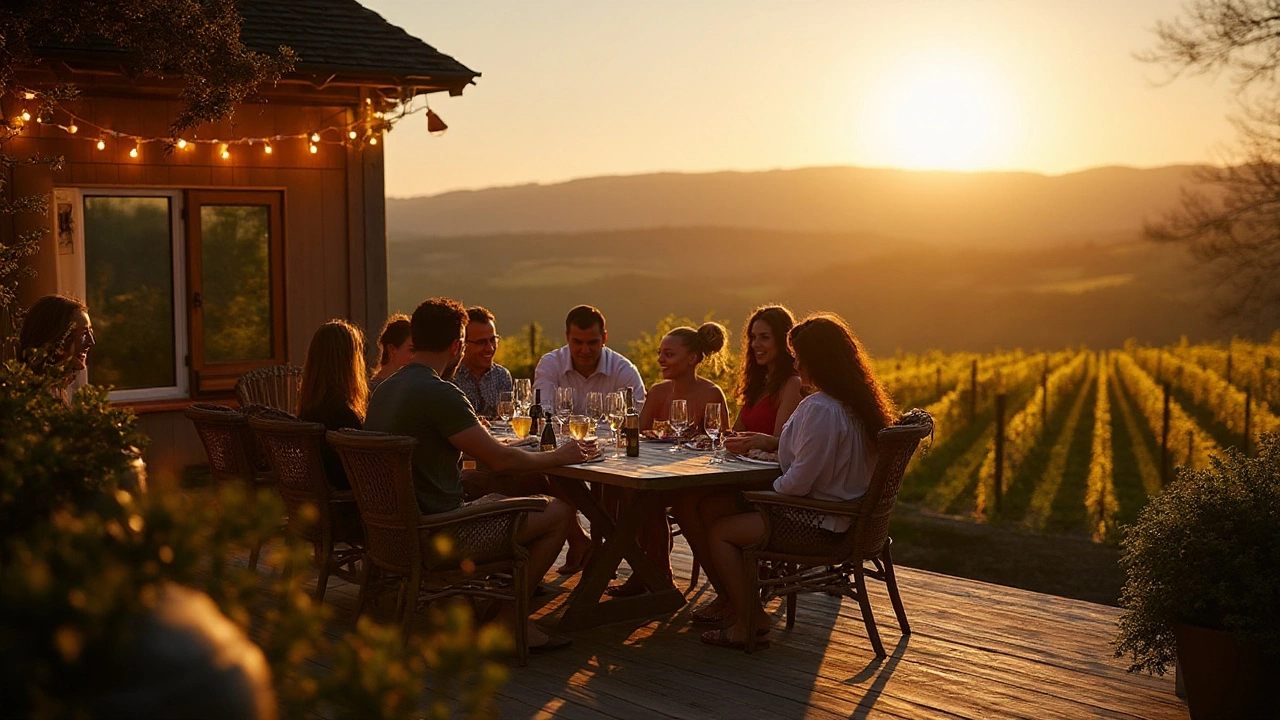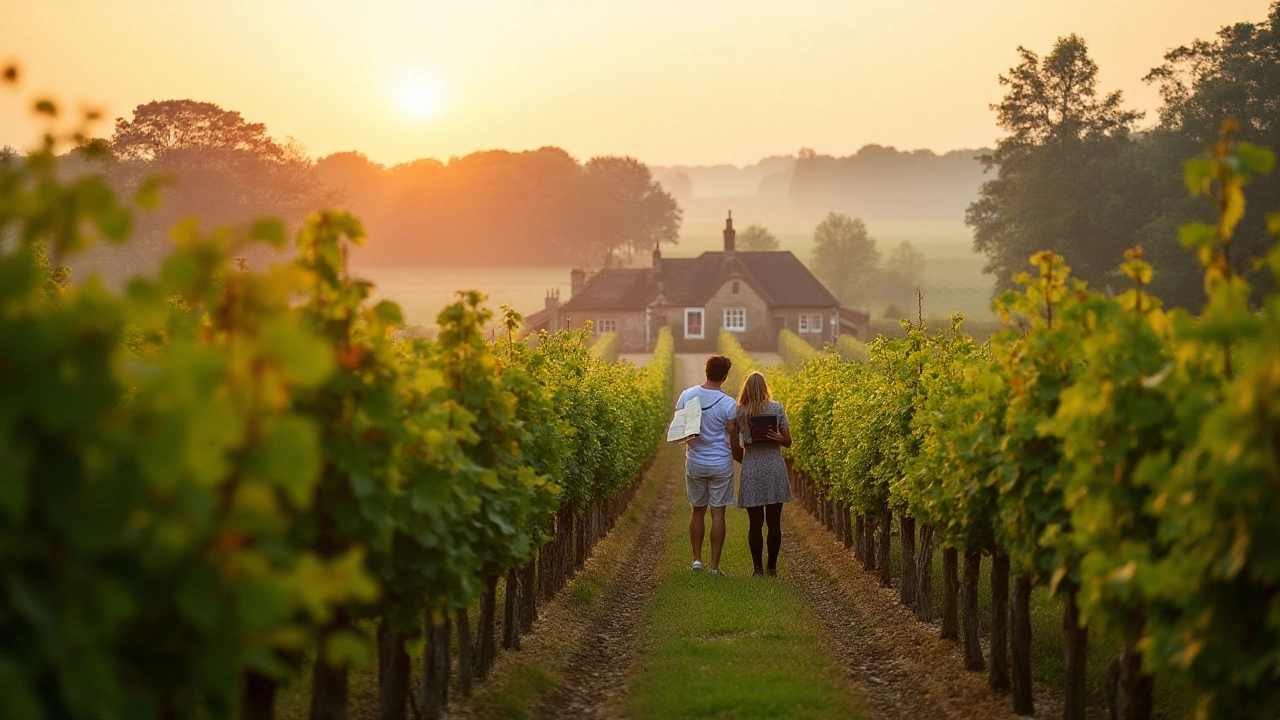Going to a winery can be an enchanting experience, especially if it's your first time. Nestled among rolling hills and sprawling vineyards, it's easy to be swayed by the charm of the setting, but there's more to a winery visit than picturesque views. To make the most of it, a little preparation goes a long way.
Knowing the basics about wine and how to taste it can turn a simple visit into a journey of discovery. It might seem as simple as sniff, sip and swallow, but with a bit of knowledge, you can truly appreciate the craft behind each bottle. Let’s delve into some key insights on what to expect and how to enhance your visit, from understanding different wine varieties to interacting with the experts behind them.
- Understanding Different Types of Wines
- Wine Tasting Etiquette and Tips
- Engaging with Experts at the Winery
- Enhancing Your Wine Tasting Experience
Understanding Different Types of Wines
When visiting a winery, distinguishing between various wine types can truly enrich your tasting experience. Let’s peel back the vinous veil and explore the diverse world of wine. At the core, wine is typically categorized by its color—reds, whites, and rosés—but there’s a delightful complexity hidden beneath these categories. Reds are made from dark grape varieties, whites from green or yellowish grapes, and rosés, well, they borrow a bit from both worlds, often made from red grapes with limited skin contact. Do you know the fermentation processes and grape types can wildly alter the flavor profiles, resulting in wines like full-bodied Shiraz with hints of blackberry or a refreshing Sauvignon Blanc with zesty lemon undertones?
The secret lies not just in the grape but also in factors like climate, soil, and winemaking techniques. For example, wines made from Riesling grapes flourish in cooler climates like Germany, leading to a crisp, aromatic white wine, while Chardonnay can be just as happy growing in warmer regions, producing luscious, buttery flavors. Each wine has a story rooted deeply in its geographical origin, often referred to as 'terroir,' a French term meaning "sense of place." This concept suggests that the character of a wine is intricately linked to the environment where the grapes are grown.
Understanding these aspects can greatly elevate your tasting escapades. Imagine swirling a glass of Merlot, thinking about the loamy soils of Bordeaux that contribute to its velvety texture. Or perhaps you savor a glass of Zinfandel, acknowledging the Californian sun that ripens the grape to create its signature jammy flavor. Not to pigeonhole wines by their vines, sparkling varieties like Champagne demand a mention too, as they're often crafted through meticulous methods adding a celebratory fizz to any occasion.
Wine knowledge isn't just about flavors, it's about connection. As amply put by renowned sommelier Larry Stone, "Wine is not just an object of pleasure, but a transmedia experience."
"Wine can capture the sensuality of a place and time, connecting us to distant moments in the process and the people who made it possible." - Jancis Robinson, Master of Wine.This connection and the narratives each variety brings can transform your wine-tasting adventure into a sensory exploration.
So, the next time you raise a glass, ponder the journey that wine has taken to reach you. A little understanding of these nuances turns each sip into a celebratory exploration of craftsmanship, nature, and traditions, making your winery visit a memorable chapter in the book of your palate’s adventures.

Wine Tasting Etiquette and Tips
Walking into a winery, you're met with a splendid array of wine tasting options, and you might wonder how to navigate this world of flavors. It's a bit like preparing to attend a symphony; you want to appreciate each note without overshadowing the experience with faux pas. Begin with dressing appropriately for the venue, as wineries can vary from casual to upscale. Opt for smart casual attire unless otherwise specified. This not only respects the cultural essence of the winery but also prevents any awkwardness during your visit.
When you reach the tasting room, remember to approach the counter with a curious mind. Relax, but be attentive. The winemaker or sommelier is there to guide your journey through the wines on offer, so feel free to ask questions. Begin by holding your glass by the stem to avoid warming the wine with your hand, which can alter its taste. Swirl the wine gently to release its aromas before taking a purposeful sniff. Your nose is a powerful tool here, and identifying aromas adds layers to the experience.
As you take the first sip, let the wine wash over your palate, noting its taste and texture. Engaging all your senses deepens appreciation. If the winery offers spittoons, don't hesitate to use them. Spitting isn't bad manners here; it's a practical move allowing you to taste a wider variety without succumbing to excessive alcohol. While it might feel strange initially, seasoned tasters often use this method to savor more without the inebriating effects.
"Wine is sunlight, held together by water," said Galileo. His perspective captures the transformative nature of wine, transcending mere beverage status to a snapshot of heritage and artistry.
Beside tasting, integrate mindful conversation, which extends beyond the immediate flavors. Share your thoughts on the wine—a thoughtful balance of feedback and inquiry can add depth to your experience. Many wineries thrive on producing story-rich vintages, steeped in tradition or innovation. Your hosts might share tales of the vineyard's history or describe the environmental nuances affecting a particular vintage. This is the human element of winemaking—the stories and care behind each bottle, a perfect canvas for enriching your encounter.
Lastly, consider purchasing a bottle of the wine that fascinates you most. It supports local businesses and extends the winery's narrative to your home. Bringing wine back helps remember the experience and indulge in reminiscing. Much like books from a treasured shop, wine from a winery preserves the day. As you leave, a heartfelt thank you to the staff goes a long way in fostering a positive atmosphere for future guests and yourself.

Engaging with Experts at the Winery
Stepping into a winery is like entering a treasure trove of stories, aromas, and experiences. To truly immerse yourself in the world of wine tasting, connecting with the experts who live and breathe this craft every day can be profoundly enlightening. Wine experts—whether they are winemakers, sommeliers, or knowledgeable staff—hold a wealth of information that can elevate your understanding and appreciation of wines to new heights. Engaging with them starts with showing genuine curiosity and respect for the art of wine making. A good opening involves asking about the origin of wines you're tasting or the characteristics that make their vineyard unique. Many are delighted to share the history of their vines, the terroir, and the distinct processes that set their wines apart. Did you know, for instance, that Bordeaux winemakers use 'micro-oxygenation' to soften younger wines and accentuate their fruity flavors? It's these little complexities that often make such interactions educational and stimulating.
During your visit, pay attention to the nuances of how a winemaker discusses their product. Notice their passion when describing how a particular grape variety expresses the terroir or how seasonal changes affect the flavor profile. This conversation is where you'll find insights that no book or online article can offer. Also, don’t hesitate to delve into technical details if you’re keen—terms like 'oak tannin structure' or 'malolactic fermentation' might sound bewildering at first but make sense when explained by someone who deals with them daily.
As the legendary winemaker Robert Mondavi once said, "Making good wine is a skill; making fine wine is an art." Engaging with experts allows you to see that art firsthand.
Understanding wine tasting is not just about tasting wines but also about understanding the broader culture of wine production. Did you know that the way grapes are pruned throughout the year can dramatically affect the harvest's outcome? Engaging in this discussion with vineyard staff can shed light on the enormous care and effort that precedes every bottle. In addition, each winery might have specific features they are proud of, be it sustainable farming practices or innovations in fermentation.
Another essential part of engaging with wine experts is through guided tastings. These sessions are designed to walk you through each wine systematically, highlighting tasting notes and offering food pairing suggestions. A great tip is to ask for any peculiar stories behind vineyard milestones or historic vintages, which can add layers to your tasting experience. Inquire about any planned expansions or new varietals—winemakers often love to discuss future vintages and their aspirations for their vineyards. Finally, take the opportunity to ask for recommendations within the region; these often lead to hidden gems off the beaten path.
In some wineries, you'll find data presented in fascinating ways, such as tables outlining the differences in grape yields or sugar levels between seasons. Here’s a small example of how precise viticulture statistics can be:
| Season | Grape Yield (kg/ha) | Sugar Level (Brix) |
|---|---|---|
| Spring 2022 | 8,400 | 23 |
| Autumn 2022 | 7,200 | 25 |
Such engagement is not only enriching but also personal. Ultimately, a winery visit combined with the insights of its passionate experts transforms the ritual of tasting wine into an interactive narrative, neatly interwoven with history, science, and a touch of magic. So, don't just taste, connect—and you’ll walk away with a story in every sip.

Enhancing Your Wine Tasting Experience
Stepping into a winery is like entering a portal to the intricate world of wine, where every bottle has a story waiting to be told. To truly enhance your wine tasting experience, it's important to immerse yourself in the process and savor each moment. One of the key aspects of a memorable visit is to be present and attentive to the sensory details. Take your time wandering through the vineyard, observing the vine rows which whisper the labor of the seasons, and the grape clusters which hold potential bottled magic. Before you even taste the wine, begin by absorbing the ambiance, the delightful mixture of earth and air, the storytelling carried by the wind. Engage with the surroundings; they set the stage for what's in the glass.
Next, let’s talk about a few practical steps to tingle your senses. Start by holding the glass up to the light and observe the color that hints at the grape variety, age, and sometimes, the method of production. Swirl your glass gently to release aromas, a dance that oxygenates the wine and sets the flavors free. When you sniff, close your eyes if you like—pluck out those notes of citrus, berry, or wood. Here’s a well-known pro tip: consider taking small uninterrupted sniffs, usually two or three, not more, to avoid saturation of your olfactory senses. Engage with your tasting companion, and perhaps take notes of your impressions, the scents you identified, the clarity and color, and how the flavors evolve with each taste.
Expanding your palate is another adventure unto itself. Many experienced sommeliers suggest practicing the ‘sip and stay’ method where you let the wine rest on your tongue briefly before allowing it to roll around your palate. This can help in identifying the various notes and flavors. A wine’s texture, its tannins, and acidity can tell you much about its origin and craftsmanship. If you're curious about how much acidity or tannins affect your wine tasting experience, think about how much your mouth waters, or the drying sensation. Did you know that red wines generally have more tannins than whites, and these can make wines feel bolder or sometimes more complex?
"Wine is sunlight held together by water." – Galileo Galilei
Another crucial facet of enhancing your wine tasting is interaction with the winemakers or vineyard staff. They are the custodians of the stories of each wine. Asking questions can lead to thrilling discoveries about wine production, grape selection, and even what temperature changes might mean for a particular year’s offerings. Wine is an intersection of art and science; from fermentation practices to blending choices, every decision shapes the final product. Showing interest and exchanging thoughts could even lead to exclusive tastings or a neat historical tidbit about the winery that typically doesn’t grace a guidebook.
Lastly, setting the right mood for your wine tasting excursion would be incomplete without considering what complements your wine. Consider pairing your wine sample with food items that complement its palate, such as cheese, meats, or fruits. Many wineries offer curated tasting boards or suggest pairings for sampling their wines. Remember, the goal is a balanced dance of flavors, enhancing both wine and food. Keep in mind that a light, crispy white wine may pair beautifully with tart fruits and soft cheeses, while a robust red might shine alongside cuts of meat or dark chocolate. Whether you're a budding enthusiast or an aficionado, every sip offers something new.
By maintaining an open mind and indulging in each aspect of the winery visit, you can truly elevate your experience. After all, a visit to a winery is not just about tasting wine; it’s about connecting with a rich heritage, indulging in flavors crafted by nature and nurtured by human expertise.


